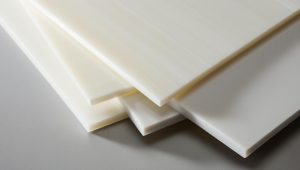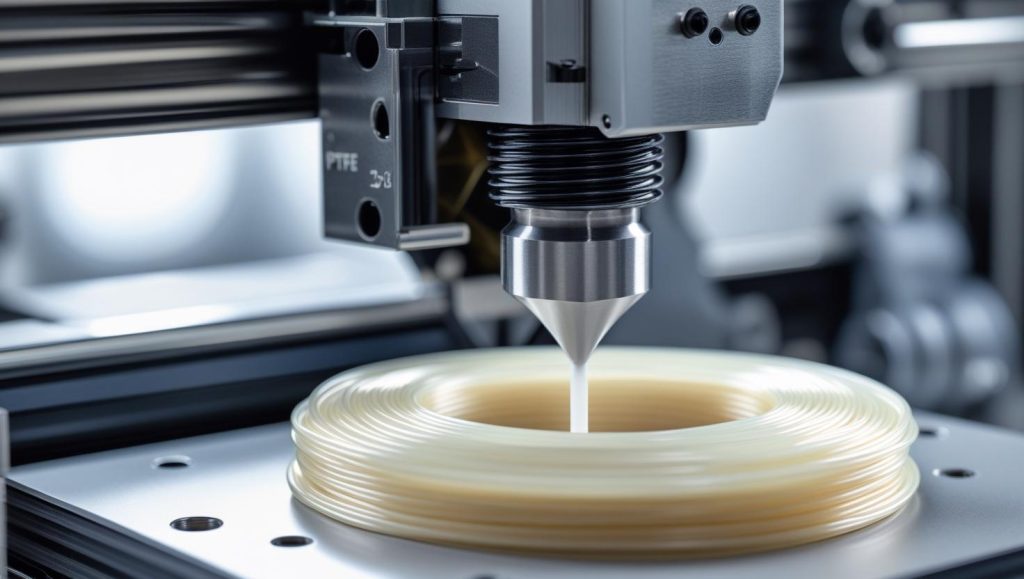PTFE (polytetrafluoroethylene), or Teflon, is a material that is strong and reliable. It resists chemicals, doesn’t stick to other surfaces, and has very low friction. Because of these qualities, it’s already used in many industries. Now, with fast progress in material science, nanotechnology, and advanced manufacturing, the future of Teflon looks even more promising. Scientists and engineers are working on new and improved versions of Teflon to meet the growing needs of different industries. In areas like aerospace, electronics, medical devices, and renewable energy, people are finding new and exciting ways to use Teflon.

The Latest Advancements in PTFE Technology
Nano-Enhanced PTFE
One particularly exciting advancement involves using nanotechnology to create PTFE nanocomposites. By iOne particularly exciting advancement involves using nanotechnology to create PTFE nanocomposites. By incorporating materials such as carbon nanotubes, graphene, or ceramics, researchers are significantly improving PTFE’s mechanical strength and resistance to wear. They are even enhancing its ability to conduct heat and electricity.
These advanced fluoropolymers are paving the way for their use in several key areas:
- High-performance bearings: where durability and low friction are critical.
- Aerospace components: including Teflon parts designed to withstand extreme conditions.
- Electronics: In applications like insulators and connectors.
These low-friction materials now offer a powerful combination of strength and flexibility, leading to innovative solutions across many different industries.
3D Printing of PTFE
PTFE used to be tough to mold into detailed shapes, but 3D printing is changing all that. Now, we can create intricate, custom PTFE parts with complex designs, which is a game-changer for many industries.
Think about these uses:
- Seals and structural components for airplanes
- Precise medical parts designed to fit specific needs
- PTFE as insulation in small electronic gadgets
- Lightweight, heat-resistant parts for cars and factory equipment

The advent of 3D printing has revolutionized manufacturing across various industries, and while traditionally challenging, the additive manufacturing of PTFE is opening up exciting new possibilities. Known for its exceptional chemical resistance, wide temperature range, and low friction, this high-performance polymer, often recognized as TEFLON, presents unique advantages when fabricated through specialized 3D printing techniques.
Overcoming the inherent challenges of PTFE’s high melt viscosity and thermal expansion requires advanced printing methods like selective laser sintering (SLS) with modified parameters or specialized paste extrusion. The creation of complex geometries and intricate designs that are difficult or impossible to achieve with traditional machining methods can be achieved using these techniques. This newfound design freedom enables the production of customized PTFE components tailored for specific applications in demanding fields such as aerospace, medical devices, and chemical processing.
The ability to 3D print PTFE, a unique fluoropolymer, offers several key benefits. Rapid prototyping of specialized seals, gaskets, and fluid handling components can be significantly faster and more cost-effective. On-demand manufacturing of low-volume, highly customized parts eliminates the need for expensive tooling and reduces material waste. Additionally, the development of intricate internal features and complex geometries can enhance performance and functionality. While still an evolving field, the 3D printing of PTFE holds immense potential for unlocking innovative solutions and driving advancements in industries that rely on the exceptional properties of this remarkable polymer.
PTFE in Diverse Applications
PTFE finds diverse applications across various sectors.
In aerospace, it serves as high-temperature-resistant seals, bearings, and coatings for aircraft and spacecraft, ensuring reliable operation in extreme environments.
In electronics, high-frequency components, insulators, and protective coatings for electronic devices are enhanced in performance and durability by the utilization of PTFE.

However, in the energy sector, PTFE is not only used in fuel cells but also plays a crucial role in solar panels and battery components, thereby contributing to improved efficiency, enhanced durability, and long-term performance; therefore, it helps to create more efficient and sustainable energy solutions.
Conclusion
The future of PTFE is driven by ongoing advancements in material science and manufacturing technologies. The development of nanocomposites, the emergence of 3D printing techniques, and the exploration of sustainable alternatives are all contributing to the expansion of PTFE applications across diverse sectors. PTFE shows its flexibility and usefulness across many areas like aerospace, electronics, medicine, and energy—by helping solve important challenges in each field.
